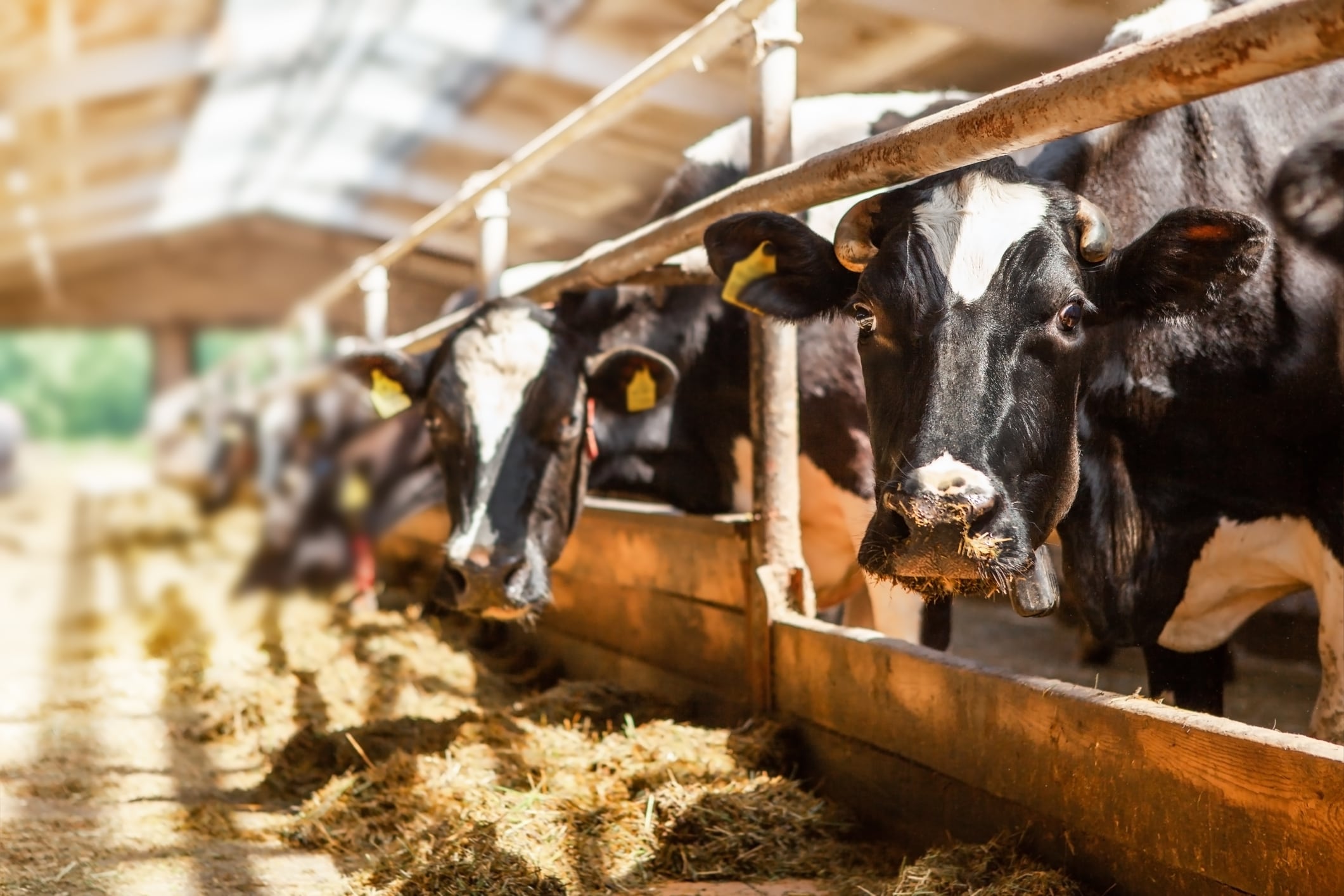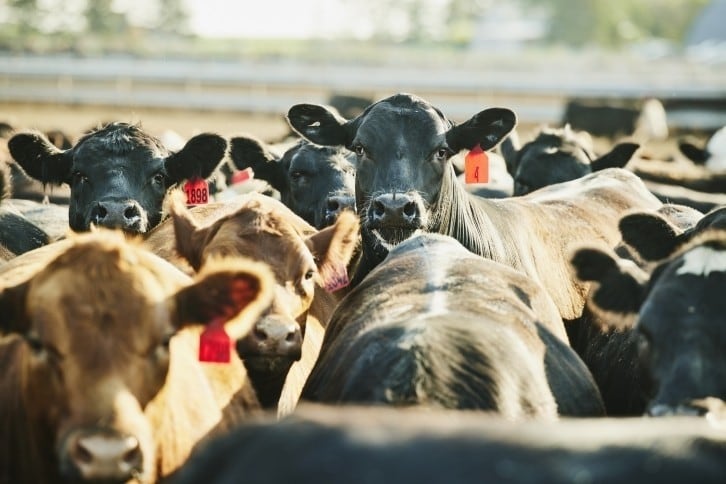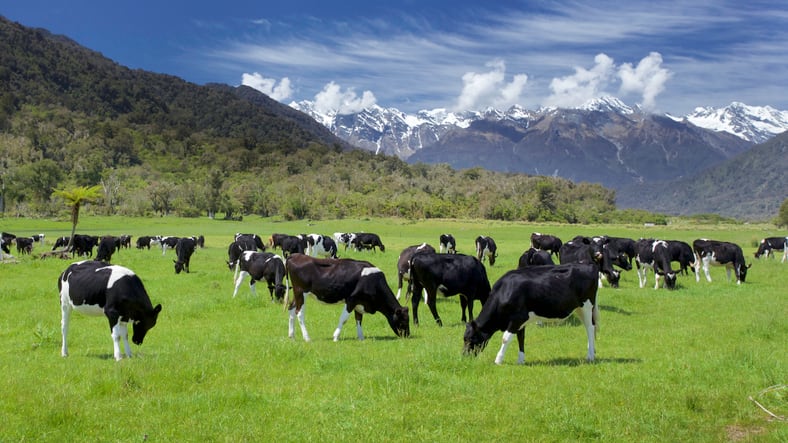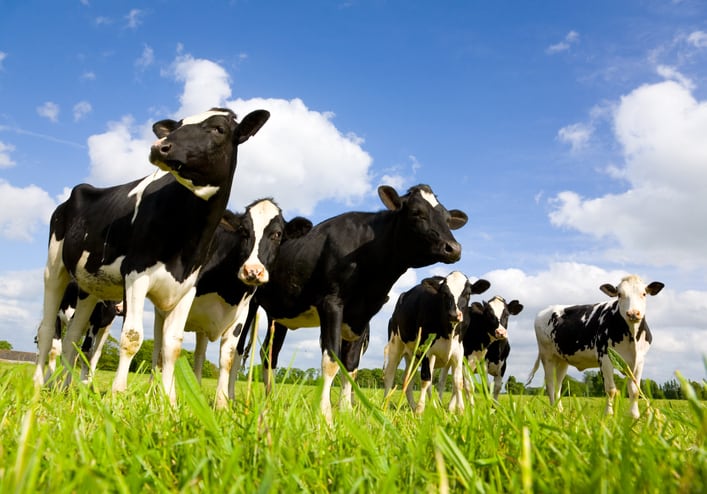Key takeaways
- Ambient Carbon has developed a patented technology, MEPS, that effectively removes up to 90% of methane from dairy barns, addressing a major source of greenhouse gas emissions in the dairy industry.
- MEPS is the first commercially viable solution capable of eliminating low-concentration methane quickly and cost-effectively, presenting a potential game-changer for achieving industry climate goals.
- Initial trials in Denmark have shown promising results, with up to 90% methane removal achieved in a 250-head dairy farm
- Larger-scale trials are planned in the US with the support of Danone.
“There has not been a way to destroy low-concentration methane before. Now, now we have a way to do that.”
This is what Ambient Carbon’s patented technology does in a nutshell – and why it’s attracted attention from dairy majors such as Arla Foods and Danone.
The start-up co-founded by chemistry professor Matthew S. Johnson and David S. Miller is making waves, fast.
Trialed at a dairy farm in Denmark, its technology – called MEPS, or Methane Eradication Photochemical System – can remove up to 90% of methane from a dairy barn.
What makes the invention unique is that it can eliminate dilute methane at a fast enough pace while remaining cost-efficient to operate, making the technology the first commercially-viable solution of its kind.
This could be a game-changer for dairy’s climate goals. Dilute methane exists at low concentrations in livestock barns where cattle emit the gas through digestion, a process known as enteric fermentation. This low-concentration methane is difficult to capture and process into energy or for removal.
Meanwhile, enteric methane is the single biggest source of methane emissions on dairy farms; and methane itself the biggest source of GHG emissions for dairy companies. A viable solution to remove methane from dairy barns would go a long way to addressing dairy’s biggest climate conundrum: how to reduce on-farm methane emissions and slash scope 3 emissions.
We spoke to Matthew S. Johnson to find out how the project came about; how the solution was adapted to suit applications from mining to livestock farming; and how Danone is planning to put the technology through its paces at a large-scale, 4,000+ head dairy farm in Indiana, US.
From a car factory to a cow farm

“We carried out this project with a postdoc and a student – the three of us invented this technology,” professor Johnson opened. “In Denmark, you are required to file an invention disclosure if you have something that could be patentable. We did that, and surprisingly, the university turned down their right to assert ownership. So the IP reverted to us.”
There were several iterations of what eventually evolved into MEPS. What follows is a lesson in chemistry and the story of the tech’s meandering path from concept to prototype.
“I figured a way to create a million times higher concentration of the hydroxyl radical than you have in the atmosphere,” Johnson said. “This means that the treatment time, instead of being several months for a molecule to break down in the atmosphere, was now several seconds. And that’s the sort of time it takes for air to go through a ventilation duct.”
The first version of the technology was designed for air purification. “We brought this unit to a windmill blades factory with styrene air pollution. And we were able to turn styrene, a carcinogen, into benzaldehyde, a food additive.”
“Then we installed that system at other places, like a Mercedes factory where they were painting cars, and we could remove the paint solvent vapors from that,” he added.
Next, the tech was displayed at the Royal Danish Embassy in Beijing, China, where questions about eliminating methane first cropped up. “But methane reacts very slowly – it has the longest atmospheric lifetime of any hydrocarbon,” Johnson said. “So I tried to intensify our system, but I couldn’t get the treatment time below about two minutes, which was way too long.”
To address that, Johnson switched from hydroxyl radicals to chlorine atoms as the reactive species.
“It takes less energy to make a chlorine atom than a hydroxyl radical,” he explained. “And because you’re breaking down molecular chlorine to make chlorine atoms, you yield two chlorine atoms for every photon of light. So we could create a thousand times higher chlorine atom concentration in our reactor than we could with the hydroxyl radicals. That high intensity is what we needed in order to have a small treatment system, the size of a storage hopper or a silo.”
In short, the system was small enough to be easily installed on a farm and efficient enough to process dilute methane.
There was just one problem.
0 of 3
“When chlorine reacts with methane, it generates hydrochloric acid, and we can’t just vent that into the atmosphere. So we created a water ‘scrubber’ to trap that.”
The system uses a swimming pool device to make chlorine and sodium hydroxide from salt water. The chlorine breaks down methane, and the sodium hydroxide is used in the ‘scrubber’ to trap and neutralize hydrochloric acid, turning it back into salt and water, which is recirculated, making for an efficient and sustainable process.
Finally, the hydrochloric acid can also be used to react with ammonia in liquid slurry, generating ammonium chloride, a nitrogen fertilizer, and reducing odor.
“We only ever need to generate a small amount of chlorine,” Johnson said. “If you have 50ppm of methane in the barn, maybe we need 50ppm or 100ppm of chlorine.”
From concept to trial

In Denmark, a prototype system is being put through its paces at a 250-head dairy farm. That trial has already yielded impressive results: between 70% to 90% of methane can be removed from the barn using the system.
The trial involves a manually-operated MEPS placed next to a semi-enclosed dairy barn – the type of housing that’s commonly found across Europe and the northern US. The system extracts 90% to 100% of air from the barn and eliminates more than 70% of methane at the least. With mindful air management, performance can be improved further, Johnson suggested.
“The system successfully oxidized methane from dairy barn ventilation air across varying concentration levels, proving that MEPS works under real agricultural conditions with co-pollutants present. At concentrations from 4.3ppm to 44ppm, MEPS eradicated up to 90% of inlet air methane.”
Matthew S. Johnson
As for how MEPS itself contributes to GHG emissions on farm, it greatly reduces methane emissions. “We improve things by a factor of three by removing that methane. And then if you, if you decarbonize the electricity, the ratio would get even higher. We are definitely beyond the breakeven point.”
Ambient Carbon hopes that the system could be carbon-negative at a future stage by leveraging renewable power and integrated carbon capture.
The Danish trial, led by the University of Copenhagen, is funded by the Innovation Fund of Denmark through their AgriFoodture program. It is also supported by Danone North America and Benton Group Dairies, the Hofmansgave Foundation and PERMA Project partners Arla, Aarhus University, and SKOV.
Next, a 30 times larger and fully automated system that Danone is funding is in the works. What would change for the North American trial? “We need a larger duct, and a bigger device for water, like a garden hose There are also higher methane levels there. We imagine that we’d need a separate unit for each wing of the barn, so one unit for every 500 cows or so, or 10 for the entire farm.”
A global solution?
If MEPS can remove methane from barn air, trap ammonia and reduce odor, is it the ‘magic bullet’ dairy’s been waiting for?
“We seem to have a global solution, one that’s very easy to implement sitting outside of the barn, one that won’t disrupt the operation at all,” Johnson said. “It’s maybe just lucky that we’re able to combine all of these attributes – but there’s real commercial traction, and I think that’s wonderful.
“The dairy industry from what I’ve seen, they really want results. So this seems to be the right technology at the right time.”
How are dairies tackling on-farm emissions?
So far, dairy hasn’t found a singular answer to its farm emissions problem: with producers leveraging a wide ‘toolbox’ to tackle methane from sources such as enteric fermentation, manure and fertilizer.
Methane also forms the largest part of dairy companies’ scope 3 emissions. Around 95% of dairy companies’ GHG emissions are scope 3, ie indirect emissions that occur up and down the value chain, including from raw milk production. Scope 1 and 2, ie direct, form around 5% and are linked to processes like transportation and manufacturing.
On farm, enteric methane is typically the largest source of GHG emissions, but tackling it at source has yielded limited results so far. Solutions deployed by companies include feed additives, boluses, anaerobic digesters, and regenerative agriculture. The type of production system typically dictates what solution or mix thereof can be leveraged: with pasture-grazed dairies unable to use feed additives in the same way indoor dairies can, for example.
Did you know?
An estimated 60% of global methane emissions stem from human activities in three sectors: agriculture (40%), fossil fuels (35%) and waste (20%). Natural processes account for 40% of methane emissions, with wetlands being the largest natural source.
According to NASA, the concentration of methane in the atmosphere has more than doubled over the past 200 years; this increase is responsible for 20 to 30% of climate warming since the Industrial Revolution (which began in 1750).
Methane contributes significantly to global warming and climate change due to its high warming potential. Of the observed net increase of 1.1°C in global temperatures, which takes into account the cooling effect of aerosols, 0.5°C can be attributed to methane (IPCC, 2023b). According to UNEP's 2024 report 'An eye on methane', the latest science shows atmospheric concentrations of methane are rising at record speed over the past five years.
Cost and efficacy are among the key considerations for producers when it comes to feed additives: with the most widely tested solution, dsm-firmenich’s Bovaer, reducing methane by 30% in dairy cattle and coming in at a cost of 1 cent per liter of milk, or about $93-105 per cow annually according to dsm-firmenich’s Julien Martin.
And that’s before public perceptions come into play. Last December, Arla Foods UK’s announcement it would trial Bovaer led to consumer and industry backlash, causing the dairy co-op to issue a statement condemning the ‘misinformation’ adding that its “commitment to reducing our climate impact is unwavering” but the company “would never do so in a way that jeopardises the health of our consumers or the welfare of our animals”.
Other solutions, such as slow-release boluses or injections, are yet to hit the mainstream; and anaerobic digesters, while widely embraced as an effective value-added solutions on farms, convert methane into renewable energy rather than eliminate the gas entirely.
Meanwhile, regenerative agriculture measures, such as carbon sequestration, have beneficial effects on cover cropping but come with significant management and measurement requirements.







